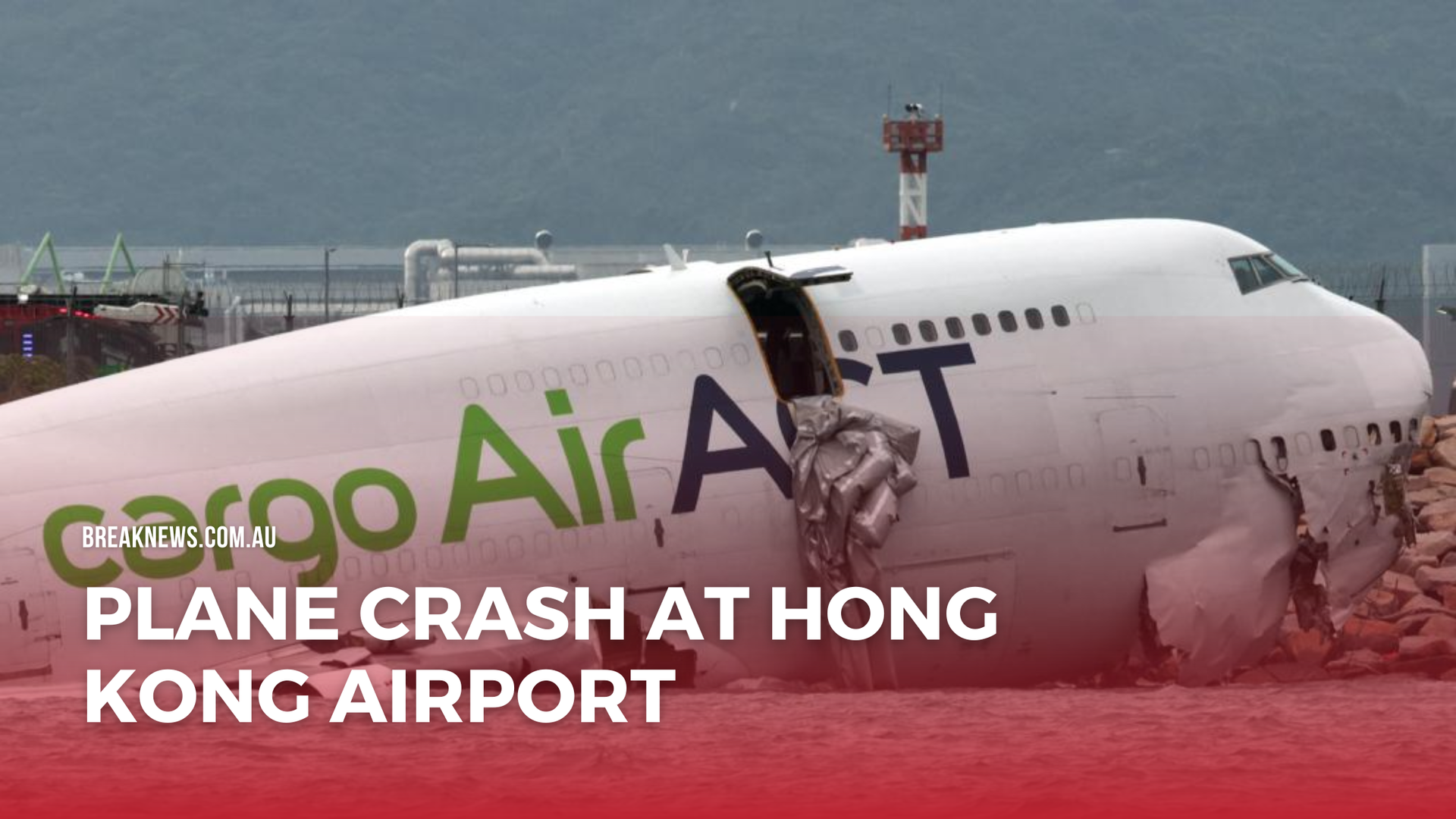Plane Crash at Hong Kong Airport: Full Story and Latest Updates

The crash of an Emirates SkyCargo Boeing 747 at Hong Kong International Airport has captured global attention and sparked urgent questions for Australian travellers and the wider aviation world. In the early hours of Monday, the cargo flight arriving from Dubai’s Al Maktoum International Airport veered off the airport’s north runway and plunged into the sea. The incident has significant implications, not just for flight safety in Hong Kong, but also for confidence in airline operations during severe weather events.
Given Hong Kong airport’s reputation as one of Asia’s busiest and most advanced aviation hubs, any major incident is newsworthy—especially one involving a high-profile cargo operator like Emirates. Early reports confirm loss of life and a massive emergency response, with authorities now searching for explanations and reviewing safety protocols. This article provides a clear and up-to-date account of the crash, the immediate aftermath, and the broader debates about aviation safety and weather risks. Sydney readers can expect ongoing updates as more information becomes available and investigations continue to unfold.
Emirates SkyCargo Crash at Hong Kong Airport Sparks Global Concern
The Emirates SkyCargo crash at Hong Kong International Airport has quickly become both a human tragedy and a headline-grabbing event for aviation observers around the world. Flight EK9788, operated by a Boeing 747-481, was completing a routine long-haul cargo run from Dubai to Hong Kong when its landing ended in disaster. As the aircraft made contact with the airport’s north runway, something went wrong in those crucial initial moments—setting a chain of events in motion that would see the aircraft leave the paved runway and enter the surrounding sea.
The incident is particularly significant given the stature of Hong Kong International Airport, which serves as a critical gateway for international freight and travellers. Emirates SkyCargo is one of the most respected global freight operators, known for strict safety standards and experienced crews. The crash has already prompted intense public interest—not only for what it says about cargo operations and weather risks, but also for the potential vulnerabilities at airports built so close to the water.
While the specific mechanical and environmental factors at play are still under investigation, early speculation points to a combination of challenging weather conditions, airport design, and operational decisions. This crash has re-ignited debate about runway safety during typhoon season in Asia, the resilience of airport infrastructure like Hong Kong’s, and how quickly rescue teams can respond when aircraft end up in areas that are difficult to reach. These wider themes will be analysed in depth, with the following sections exploring how the incident unfolded and what it means for aviation going forward.
How the Plane Veered Off Hong Kong Airport's North Runway Into the Sea
Emirates SkyCargo flight EK9788 lost control while landing on Hong Kong International Airport’s north runway at approximately 3:50am local time. According to ADS-B flight tracking data, the Boeing 747 touched down at a time when weather conditions were challenging. Eyewitnesses and authorities report the aircraft began veering left almost immediately after its wheels contacted the runway surface.
Despite efforts by the crew to bring the plane to a halt, it failed to stop within the available runway distance. The aircraft continued off the paved surface, breaching the perimeter and sliding down the embankment into the sea. The airport's location on reclaimed land—with runways flanked by water—meant there was little margin for error. This setup contributed to the severity of the incident and complicated the rescue response.
Sea Crash Rescue Response and Plane Crash Casualties
The moments after the crash were marked by a rapid and challenging rescue operation. With the Boeing 747’s fuselage partially submerged in the sea off the airport’s north runway, Hong Kong authorities faced a crisis situation that demanded instant action. The fate of the crew and the aircraft itself hinged on the speed and coordination of emergency services operating in unfamiliar, hazardous conditions.
There were several crew members on board, with initial statements confirming both survivors and casualties. The nature of this crash—unfolding not on solid ground but in the open water—introduced risks and complications unseen in most airport emergencies. Swift triage, evacuation, and medical intervention became critical, highlighting the difference between sea-based and typical runway incidents.
Hong Kong’s fire, police, and medical teams all played vital roles, drawing on specialised training and equipment for marine rescue scenarios. Despite their preparedness, the unusual location put standard protocols to the test, forcing first responders to adapt and improvise. Further details on these rescue efforts, along with confirmed figures for injuries and fatalities, are provided in the following section.
Emergency Teams Battle the Sea Crash Aftermath
Emergency teams responded immediately after the crash, activating the Airport Emergency Centre and mobilising marine police, fire services, and medical crews to the site. Firefighters used inflatable rafts and marine craft to reach the wreckage, despite choppy waters and limited visibility. The accident’s proximity to deep water increased both the urgency and danger of the operation.
Coordinated efforts between airport, marine, and medical units were essential for evacuating injured crew and recovering those pronounced dead at the scene. Delays in reaching the submerged aircraft and extracting victims highlighted the inherent challenges of water-based rescue on reclaimed land. The operation served as a stark reminder of the complex risks faced during such rare but serious airport disasters.
Did Typhoon RagaSa and Severe Weather Influence the Crash?
Typhoon RagaSa was a significant factor influencing flight operations at Hong Kong airport on the day of the Emirates SkyCargo crash. At the time of the incident, strong crosswinds, fluctuating visibility, and active storm warnings were reported across the territory. Meteorological data showed wind speeds exceeding typical safety thresholds for large aircraft landings, particularly for heavy cargo planes like the Boeing 747.
Official advisories from Hong Kong’s Civil Aviation Department indicated heightened alert levels, with some flights diverted or delayed as Typhoon RagaSa passed nearby. In addition, Super Typhoon activity in the Philippines contributed to unstable conditions across the South China Sea, amplifying the overall risk profile for all incoming and outgoing flights. Despite the risks, Emirates SkyCargo flight EK9788 proceeded with its scheduled landing, a decision now under scrutiny as investigations into the crash progress.
Weather is always a factor in aviation safety, but typhoon conditions introduce variables—like wind shear, sudden gusts, and torrential rain—that can overwhelm even experienced crews and the best onboard technology. Aviation safety protocols at Hong Kong International Airport are designed to manage such risks, but the incident has prompted questions about cargo flight oversight, risk assessments, and whether any decisions made that day breached established typhoon operating limits. The investigation’s findings will shape future policy and likely influence cargo and passenger flight protocols across the Asia-Pacific.
Airport Safety Debates and Hong Kong's Political Backdrop
The Emirates SkyCargo crash has immediately reignited debate about infrastructure and public safety at Hong Kong International Airport. As the city faces ongoing political tensions and a vocal pro-democracy movement, questions have been raised about government priorities, transparency, and the sufficiency of current aviation protocols. Many Hong Kong residents have voiced concerns on social media, arguing that the crash exposes weaknesses in airport safety management and oversight.
Expert commentators point to the pressure placed on local authorities by major transport accidents, which often become lightning rods for criticism of broader governance issues. In the wake of the crash, pro-democracy advocates have drawn parallels with earlier controversies, suggesting a lack of public accountability and insufficient consultation on infrastructure safety. For Australians following the story, this reflects a dynamic seen in other global contexts—where transport incidents spark wider debates about public trust, government competence, and the tension between economic priorities and safety standards.
These arguments mirror discussions held in New South Wales and beyond about government response to crises and public transparency. For a detailed analysis of political accountability in Australia, readers can consult the Break News opinions page, which explores similar themes in the context of health policy and crisis management. In Hong Kong, the crash has become a touchpoint for wider policy debate, with calls for independent reviews and improvements to airport and aviation regulation.
How Runway Design and Coastal Geography Shaped the Hong Kong Airport Crash
Hong Kong International Airport’s distinctive design, built almost entirely on reclaimed land and surrounded by the South China Sea, played a pivotal role in the severity of the Emirates SkyCargo crash. Unlike traditional inland airports, both of Hong Kong’s main runways terminate just metres from deep water, leaving little margin for error when an aircraft overshoots or veers off the paved surface. This geography sharply increases the risk of runway excursions ending in water rather than on land.
Runway End Safety Areas (RESAs) are designed to slow or stop aircraft that exit the runway, but their effectiveness is limited when water is immediately adjacent. In the case of the north runway, the short distance between the tarmac and the coastline meant there was no buffer zone—turning even a minor runway excursion into a major marine rescue scenario.
The incident highlights the unique engineering challenges faced by airports like Hong Kong’s. Emergency evacuation procedures must account for rapid water ingress, difficult access for rescue vehicles, and hazards posed by tides and currents. The swift activation of marine and airport emergency services was vital, but the design limitations inherent to reclaimed land airports remain a serious concern. As calls grow for stricter oversight and possible infrastructure upgrades, Hong Kong’s experience may influence future international safety regulations for coastal airports worldwide.
Limited Time Offer
Become a Successful NDIS Provider
$689 $349
Use code EARLY349 at checkout
News Feed







